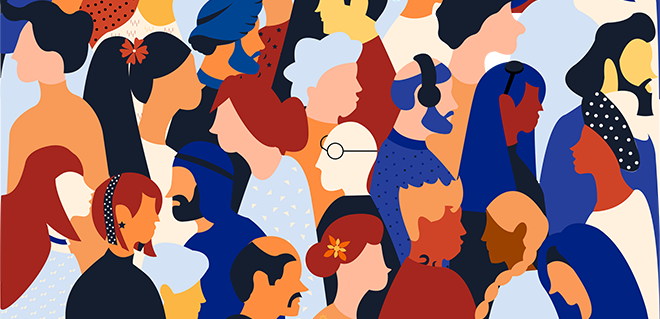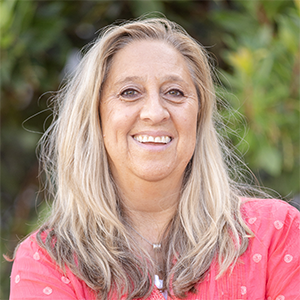
Diversity, equity, and inclusion in marketing is all about how different voices and identities are represented and elevated across all forms of messaging and communications across all channels.
But that also means having a diverse workforce behind the scenes at brands and agencies creating advertising and targeting global audiences.
With population shifts, businesses must incorporate diversity into their business practices. Research has shown again and again that truly diverse companies reap the rewards. DEI increases revenue and your customer base.
That’s precisely why BRIDGE was created. BRIDGE is a purpose-driven DEI trade organization serving the global marketing industry with a mission of moving the DEI narrative from a philosophy to operationalizing inclusion as a business practice for growth. With a proprietary framework, BRIDGE helps companies identify and bridge the gaps that have created inequities for under-represented and untapped communities in the workplace, workforce, and marketplace.
Sheryl Daija launched BRIDGE in April 2022 with a board of 13 founding member companies, and it has rapidly grown to upwards of 25. The board’s composition is a deliberate convergence of leaders in diversity, marketing, and business from companies including Campbell’s, Condè Nast, Discover Financial, H&R Block, IBM, iHeartMedia, Indeed, Sephora, and Unilever.
We spoke with Daija about her career in advertising and marketing, founding BRIDGE, the importance of DEI in the industry, and where she sees the organization going this year.
Committing to DEI and Founding BRIDGE
Yakira Young: How did you begin your career in the advertising and marketing industry? How did that evolve to the founding of a DE&I trade organization? Has DE&I always been a passion of yours? 
Sheryl Daija: I was born in South Africa and lived under the apartheid regime. So I witnessed what inequity looked like at an early age which fueled my drive for social justice. This, in addition to being part of a multiracial family, has strengthened my commitment to changing the world for the better. BRIDGE is my vehicle.
Professionally, I began my career in marketing and strategy in the health and beauty aid and tech industries. After 9.11, I was recruited into the trade group model and was the general manager at IAB, where I helped turn around the organization during the internet bust and boom. Most recently, I served as the Chief Strategy Officer at MMA again as part of a turnaround team. I have always been passionate about creating industry impact and understand the power of bringing people together to build and drive change. I decided to merge my passion for building a more inclusive industry (and world) together with my expertise in bringing the industry together, this time, to collaborate for good. And so, BRIDGE, an acronym for Belonging, Representation, Inclusion, Diversity, the G for the Gap, and Equity, was born.
YY: What were the catalysts in starting BRIDGE? How and when did you recognize there was a need?
SD: During the pandemic and after the George Floyd murder, I was fortunate to be connected with some incredible chief diversity officers and other business leaders – we would organically meet every few weeks as an intimate group to discuss various issues, and no topic was off the table.
It was an incredibly tumultuous time with many people experiencing real pain, and we were all looking for a connection and to be in safe spaces with like-minded others. As we continued to meet, it became apparent that the CDO role was incredibly tough and mostly sat outside the business. On the one hand, there were diversity practitioners who had been doing the work for years; on the other hand, there were people who were placed in the role just by their race.
In both cases, the expectations were for them to fix things, sometimes with little or no support. As a result of our conversations, I saw the opportunity to create a trade organization that could leverage the same model we used to build marketing platforms. And I also realized that to drive real systemic change, we needed to bring together diversity, marketing, and business leaders and make DEI an integral part of the business. To be quite honest, I didn’t expect that we would get as far as we are as fast, but I think it’s a testament to the incredible leaders who have raised their hands to build BRIDGE together and to the reality of the DEI crisis we are currently facing in this country.
YY: What outcomes are you focused on/can we expect?
SD: For the short term, we are super focused on bringing the BRIDGE Inclusion Framework to the industry, which is steeped in our proprietary Voices of Inclusion research. While I can’t share too many details now, we believe we have a new approach that will help companies systematically and strategically build inclusive brands and organizations.
Additionally, we will soon launch our BRIDGE Stories program and bring the industry together to continue to set the future agenda at BRIDGE 2023, our inaugural 2 ½ day retreat for diversity, marketing, and business leaders. We are also working on several programs to set industry standards and benchmarks for more consistent measurement and accountability.
For the long term, we would like to help everyone become a BRIDGE practitioner, no matter your role in an organization where inclusion and equity are operationalized.
The Lack of DEI Structures and Practices and Its Ripple Effect
YY: In a Washington Post article about Susan Wojcicki’s departure from YouTube, you discussed the risk and impact of losing women in leadership roles. Can you talk about the significance of Susan’s departure and how women and other minority-represented organizations can better prepare for a woman or minority CEO to step down?
SD: Unfortunately, we still live in a time where it is incredibly significant when a female CEO steps down from her position, and the level of scrutiny is far more intense than when a male CEO does the same simply because there are fewer of us, and so the impact is so much more significant.
As you might know, only 10.9% of CEO and senior leadership roles in tech are now held by women, and in general, women employed in tech is 26%, which is even lower for people of color. So when a woman or person of color steps down and is not replaced with the same representation, we start from behind instead of building for the future.
To combat the impact, we need better succession planning and intentionality around appointments, mentoring, and even layoffs. The current systems and structures were not created to accommodate different experiences. So it’s time to start divesting these structures and rethinking more equitable systems that allow for greater inclusion, diversity, representation, and belonging in the workplace and marketplace.
DEI in the Media, Marketing and Advertising Industry
YY: You’ve said that we have become a nation of “months,” which is not necessarily good. Can you further explain what you mean by this and the implications?
SD: In America, we’ve become a nation that celebrates months such as Black History Month, International Women’s Month, Hispanic Heritage Month, etc.
While it is positive to bring attention and use the months for education, it has also become a trend that has led some marketers and advertisers to use them to show their commitment to DEI&B. Still, most times, their activities are performative and do not drive any real change. For example, displaying a rainbow flag without advocating for LGBTQIA+ rights doesn’t move the needle. To create meaningful and lasting change, organizations need to consider how they can move beyond performative acts and prioritize the creation of structural and systemic change that is consistent and intentional.
YY: How can marketers ensure that marketing and advertising strategies address the existing lack of diversity and that all voices are represented in their messaging? How can organizations begin to recognize performative vs. intentional and thoughtful marketing around these holiday months?
SD: It starts with the team – I heard a quote that I loved, “Nothing about us without us!” If you’re going to include a certain culture or underrepresented community as part of your strategies, be sure that there is representation on the team that is listened to or seeks it out in an equitable and meaningful way. This will lead to a far more authentic outcome and execution.
It’s important to be deliberate and consistent – align your core brand values with your communications and understand how you can create strategies that both inspire customer loyalty and influence positive change throughout the year, not just in the month.
DEI work is not 9-5. If your group of trusted advisors and communities all look like you then you’re not building your own cultural competency. Find ways to expand your circle in a genuine way that appreciates and respects individuals for who they truly are.
Understand who your consumers are and message them in meaningful cohorts. People are multidimensional and so creative – media plans and customer segmentations must recognize this.
And finally, operationalize all of these as critical business practices!
YY: Is there hope and what can those who want to foster DEI&B do to advance it?
SD: There is most definitely hope, but more than that there is a way to be incredibly successful and use DEI as a driver of growth if done deliberately.
The buying power for Black Americans, Asian Americans, Hispanics and Native Americans was projected at close to $5 trillion in 2020 which represents over 28 percent of the nation’s buying power. So this shows that underrepresented communities have considerable clout.
The BRIDGE Inclusion Framework gives organizations a very clear roadmap on how to start, how to identify unique gaps and then how to bridge them. So for those companies that feel like this is daunting, we have a path forward in a very structured way.
We encourage everyone to start thinking of inclusion as their next big growth opportunity and implement it as a business practice across the workplace, workforce and marketplace. BRIDGE is very much here to help.
BRIDGE 2023
YY: You recently launched BRIDGE 2023: Pioneering Next DEI Practices–a DE&I-focused retreat in April that unites top diversity, marketing, and business leaders. What was the driving force behind the retreat, and what do you hope the outcomes are?
SD: Quite frankly there has never been a more important time than now for us to come together as an industry to drive systemic change. We have state governors issuing directives intentionally mischaracterizing how DEI practices work, tech layoffs setting diversity back by decades, and discriminatory education practices that grow the chasms to achieve equity.
On the other hand, we are seeing the power of the world’s top diversity, marketing, and business leaders courageously working together to build a more inclusive industry. So we launched BRIDGE 2023 to expand our ever-growing community, make the BRIDGE movement aligned against our mission to accelerate the change in our industry, and lay the foundation of how companies can operationalize inclusion.
We are also excited as it’s our first year after our launch, so we have committed to creating something thought-provoking, actionable, and unforgettable! Everyone is welcome!